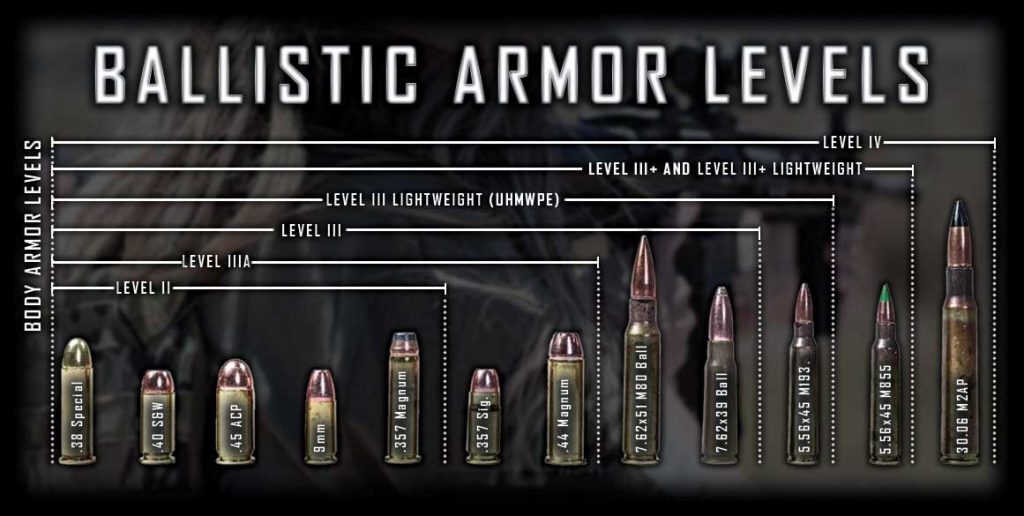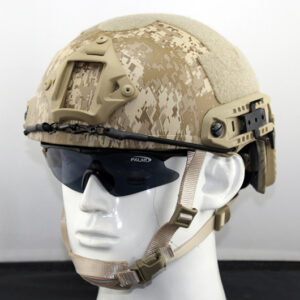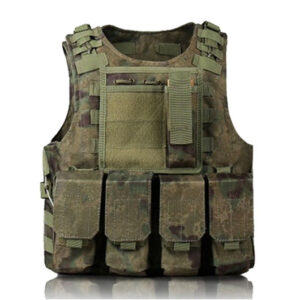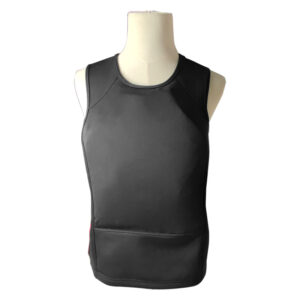Bulletproof vests are also known as bullet-proof clothing. Bulletproof vests are individual soldiers’ protective equipment. It is used to protect the human body from damage caused by warheads or shrapnel. From the use point of view, bulletproof vests can be divided into police types and military types. From the material point of view, bulletproof vests can be divided into three types: software, hardware, and soft-hard complex. The bullet-proof vest is mainly composed of a jacket and a bulletproof layer. The jacket is usually made of chemical fiber fabric, while the bulletproof layer is mostly made of metal.
There are many standards for bulletproof level, but the NIJ standard of the United States is commonly used. There are six levels in this standard. They are level I, level IIA, level II, level 3A, level III, and level IV. The requirements for six grades of bulletproof vests are different:

Class I
Class I: A .22LR bare lead bullet with a weight of 40 grains. The speed of about 308 ~ 332m/s.The weighs 158 grains and has a speed of about 244 ~ 274m/s..38 Special is a .22LR or .38 revolver pistol which is all fired by a rifle.
Class II
The 9mm Parabellum, which weighs 124 grains and has a speed of about 320 ~ 344m/s, is a 357mm Ma Genan soft-pointed bullet with a weight of 158 grains and a speed of about 366 ~ 396m/s, and an ordinary 9mm semi-automatic pistol or .357 revolver.
Class II: 9mm Parabellum, weighing 124 grains and with a speed of about 346 ~ 376m/s, is all a hand bullet fired by a 357mm Ma Genan soft-pointed long-barrel pistol or short-barrel submachine gun with a weight of 158 grains and a speed of about 410 ~ 440m/s.
Class III
The A .44 Ma Genan hollow pointed bullet weighing 240 grains with a speed of about 411 ~ 442m/s, and a 9mm Parabellum pistol bullet with a speed of about 411 ~ 442m/s, all fired by a long barrel carbine.
Class III: A 7.62 mm ordinary bullet with a weight of 147 grains and a speed of about 823 ~ 853 m/s, which was all fired by the A-shell M14.
Class IV
.30-06 armor-piercing projectile M1 launched by Garland with a weight of 166 grains and a speed of about 853 ~ 884 m/s.
The bulletproof vests above Grade III are hard bulletproof vests, whose main materials are metal, ceramic, and other composite materials. They block the penetration of bullets with their high hardness, thus achieving the bulletproof purpose. Although heavy, its cost is low. Which can resist the firepower of a rifle. Generally, foreign customers mostly require that the protection level of bulletproof vests is Class Ⅲ A.
The bulletproof vests below Grade III are soft bulletproof vests, materials are high-strength fibers such as Kevlar. This kind of bulletproof vest is fit for the body, light, soft and flexible, but its cost is high. With their high strength, they block the penetration of bullets and achieve the goal of bulletproofing. Unfortunately, today’s soft body armor can only provide different levels of protection for the most common low-speed and medium-speed pistol bullets. Class I is the lowest protection level, which can only protect against the attack of 0.22RL-inch pistol bullets and 0.38-inch pistol bullets. However, it can be worn in a suit and has the characteristics of small weight, good concealment, and no hindrance to the flexible movement of the wearer. Level IV is the highest level of body armor for individual soldiers. It is specially designed for a high-risk combat environment.
The most powerful bulletproof vest in active service is the interceptor bulletproof vest in the United States. When the interceptor combines a tactical vest, KM-2 Kevlar, and boron carbide ceramic insert plate, its protection level rises to level IV, which provides the highest level of battlefield protection in the world for soldiers on the battlefield.



